Nasser Hadian is a U.S.-educated professor of political science at the University of Tehran and a former visiting professor at Columbia University.
Why has Iran grown closer to Russia and China under President Ebrahim Raisi? How does the shift reflect Iran’s foreign policy more broadly?
Iran has increasingly shifted toward the East since President Raisi took office in 2021. But his policies are part of a broader trend that has been building for years. Iranian leaders, guided by the revolutionary slogan of “neither East nor West,” had sought to avoid becoming dependent on any one power or bloc. But by 2023, that strategic balance had tipped decisively in one direction.
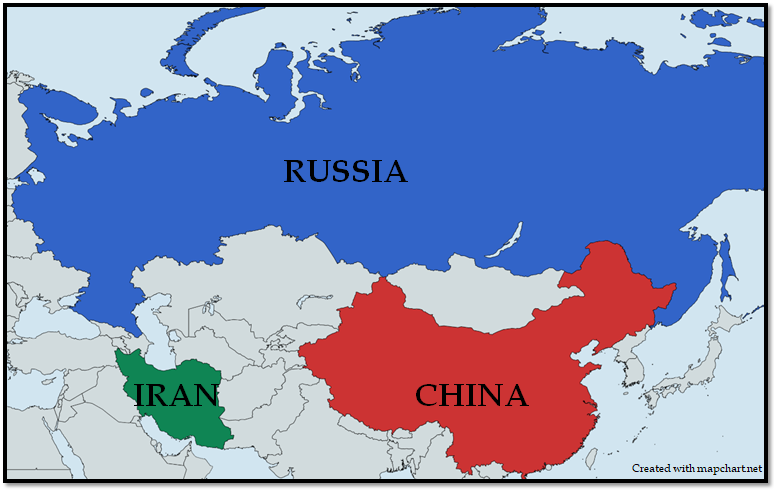 Since the 1979 revolution, the primary foreign policy debate has been whether to align with Europe, Russia, or China. That debate ended in 2018 when President Donald Trump abandoned the 2015 nuclear deal. The agreement, brokered with the world’s six major powers, had limited the Islamic Republic’s nuclear program in exchange for relief from many international sanctions. But the U.S. move and the subsequent reimposition of sanctions nullified the economic benefits promised Iran.
Since the 1979 revolution, the primary foreign policy debate has been whether to align with Europe, Russia, or China. That debate ended in 2018 when President Donald Trump abandoned the 2015 nuclear deal. The agreement, brokered with the world’s six major powers, had limited the Islamic Republic’s nuclear program in exchange for relief from many international sanctions. But the U.S. move and the subsequent reimposition of sanctions nullified the economic benefits promised Iran.
Tehran was dissatisfied with British, French and German efforts to salvage the deal. Iran increasingly considered Europe strategically irrelevant because it abided by U.S. sanctions. Nearly all the officials who called for stronger ties to Europe and the United States were discredited by the U.S. withdrawal, especially President Hassan Rouhani (2013-2021) and his foreign minister, Javad Zarif. The West increasingly isolated Iran over its human rights record and nuclear advances. Iran in turn grew closer to Russia and China. The trend continued into 2023.
On what issues do Iran and Russia collaborate?
Iran and Russia have collaborated on trade, energy, arms, and nuclear projects for decades. Tehran has often been frustrated with Moscow’s slow implementation of agreements. But the two have grown closer in the face of Western pressure.

Tehran and Moscow have worked together to skirt U.S. sanctions. Since at least 2014, they have reportedly cooperated on exporting oil to Syria, which is also under U.S. sanctions. In January 2023, the two countries linked their banking networks to offset their cutoff from SWIFT, the global financial service that facilitates billions of dollars in transactions every day. Most Iranian banks were disconnected from SWIFT in 2019 after the reimposition of U.S. sanctions. Major Russian banks were cut off after the February 2022 invasion of Ukraine. Tehran and Moscow have increasingly used national currencies rather than foreign currencies to get around sanctions.
Bilateral trade has been relatively small since the 1990s. The two have mostly traded food products. But commerce has been growing. In 2022, imports and exports increased some 15 percent from 2021 to $4.6 billion. The two countries have set an ambitious target of $10 billion in annual trade. The expansion of the International North-South Transport Corridor – a land and sea route connecting Iran, Russia and other countries – could lead to a surge in trade.
Russia has expanded investment in Iran’s energy and infrastructure sectors, including ports and roads. In 2022, Iran’s National Iranian Oil Company and Russia’s Gazprom committed to a $40 billion deal in which Gazprom would develop two natural gas fields, six oil fields, pipelines and other infrastructure. By 2023, Russia had overtaken China as the top foreign investor in Iran.
Iran, which has long been under international arms embargoes, has looked to Russia for advanced weapons. It took key deliveries of Russian fighters and bombers in the 1990s while rebuilding the military after the devastating 1980-1988 war with Iraq. In 2007, Moscow agreed to sell Tehran the S-300 air defense system for $800 million. But Russia, under U.S. pressure, suspended the deal. Iran, after filing a $4 billion lawsuit against Russia and implementing the 2015 nuclear deal, finally received the system in 2016.
Iran only became an important source of weapons for Russia after the invasion of Ukraine. In 2022, Iran reportedly provided hundreds of armed drones as well artillery and tank rounds to Russia.
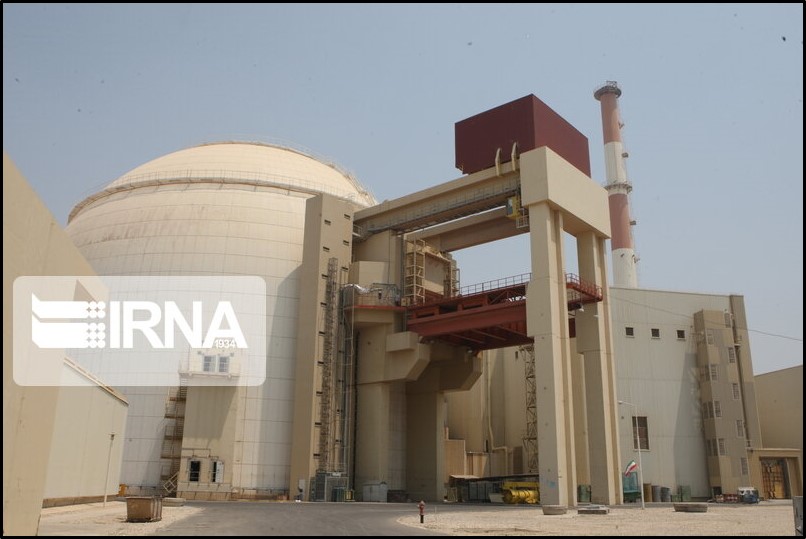
Iran and Russia have collaborated on nuclear technology for decades. Under the shah, a West German company started work on the Bushehr nuclear power plant in the 1970s, but the project was canceled after the 1979 revolution. In 1995, Tehran sought Moscow’s help with finishing construction of a nuclear reactor. Iran grew frustrated with years of delays on Russia’s part, but the plant finally started operating in 2011.
Russia has continued to provide fuel for the Bushehr reactor. Under the 2015 nuclear deal, Russia supplied fuel for the plant as well as the Tehran Research Reactor and removed excess uranium from Iran. Iran held a groundbreaking ceremony for the construction of two more Russian-built reactors at Bushehr in 2016.
Many Iranians have been wary of warming ties with Moscow. But public opinion could shift with more interaction. The two countries have removed visa restrictions to encourage travel. In early 2023, Russia allowed Iranians to visit for up to six months without a visa.
On what issues are Iran and Russia divided? To what extent are they competitors in other fields, such as energy?
Iran and Russia, both major producers of crude oil, historically exported to different markets. Iran focused on Asia, especially China, while Russia focused on Europe. But the dynamic shifted in 2022 when European countries started reducing imports of Russian energy after the invasion of Ukraine. Russia subsequently increased oil exports to China in direct competition with Iran. Both Iran and Russia have reportedly sold crude oil at prices well below international benchmarks to entice customers. But they have tried to mitigate the degree of competition.
Iran has been frustrated with Russia’s working relationship with Israel, its archenemy in the Middle East. After the outbreak of the Syrian civil war in 2011, both Iran and Russia came to the aid of the Assad regime. But Moscow has largely turned a blind eye to frequent Israeli airstrikes on Iranian forces and proxy militias in Syria.
What is the Iranian government’s position on the war in Ukraine? How has it evolved since Russia invaded in February 2022?
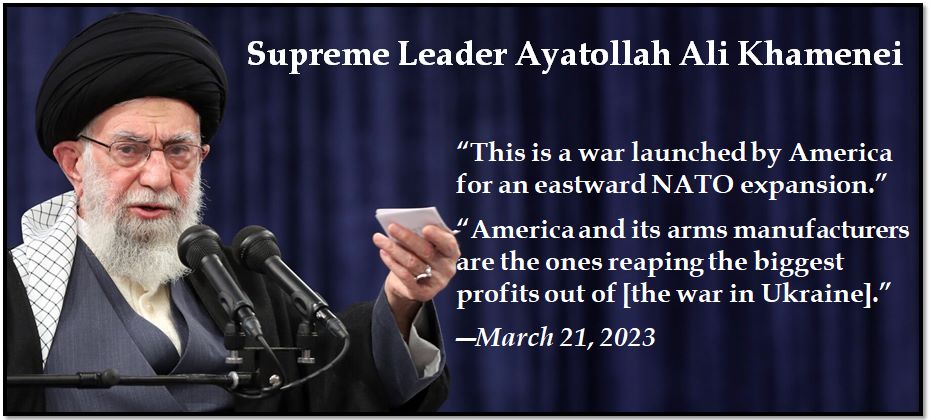 The government has backed Russia but tried to appear balanced in its public messaging. It has expressed two principles. First, Iran stressed that the territorial integrity of all countries should be preserved. As of early 2023, Iran had not recognized Russia’s annexation of any part of Ukraine, including Crimea. Second, even as Tehran claimed neutrality, it provided weapons to Russia. Iran viewed its support for Russia as equivalent to U.S. military support for Saudi Arabia in the Yemeni conflict that began in 2014. It also offered to mediate between Kyiv and Moscow.
The government has backed Russia but tried to appear balanced in its public messaging. It has expressed two principles. First, Iran stressed that the territorial integrity of all countries should be preserved. As of early 2023, Iran had not recognized Russia’s annexation of any part of Ukraine, including Crimea. Second, even as Tehran claimed neutrality, it provided weapons to Russia. Iran viewed its support for Russia as equivalent to U.S. military support for Saudi Arabia in the Yemeni conflict that began in 2014. It also offered to mediate between Kyiv and Moscow.
The Islamic Republic largely blamed Russia’s war with Ukraine on the United States and Western powers. Leaders cited NATO encroachment on Russia’s sphere of influence as the root cause of the conflict. They contended that NATO or Ukraine could have avoided a conflict by pledging that Kyiv would never join the alliance. But many officials also thought President Vladimir Putin could have avoided the deaths of so many thousands of civilians.
What are the Iranian population’s views on the war in Ukraine?
A large majority of Iranians have sympathized with Ukraine for three main reasons. First, mistrust toward Russia has been ingrained across generations. The Qajar dynasty lost territory to the Russian Empire in the 19th century. Between 1941 and 1946, Soviet troops occupied parts of Iran’s northern provinces. The Soviet Union supported Azeri and Kurdish separatists at the end of World War II. They did not necessarily have a particular attachment to Ukraine. Most Iranians would identify with any country fighting a Russian invasion.
Second, dissatisfaction with the government’s foreign and domestic policies fuels negative views of Russia. Iranians who are critical of their government tend to identify with Ukraine partially because of their broader dissatisfaction.
Third, Iranians have experienced an invasion and bloody war for themselves. Seeing the Ukraine conflict covered in the media reminded them of their own tragedies and suffering during the Iraq war.
Iran has reportedly provided Russia with hundreds of drones since August 2022. Why? What has Iran gained or what might it gain from this arrangement?
Iran has benefited from the conflict beyond the revenue from the drone sales. Economically, Iran and Russia have increased bilateral cooperation to a level that would not have been possible before the war. Tehran has assisted Moscow with avoiding sanctions. Russia increased investment in the Islamic Republic. Iran also benefited in terms of energy. In September 2022, Iran announced that it would buy 3.3 billion cubic meters of natural gas from Russia annually. In February and March 2023, Russia reportedly provided 30,000 tons of gasoline and diesel to Iran.
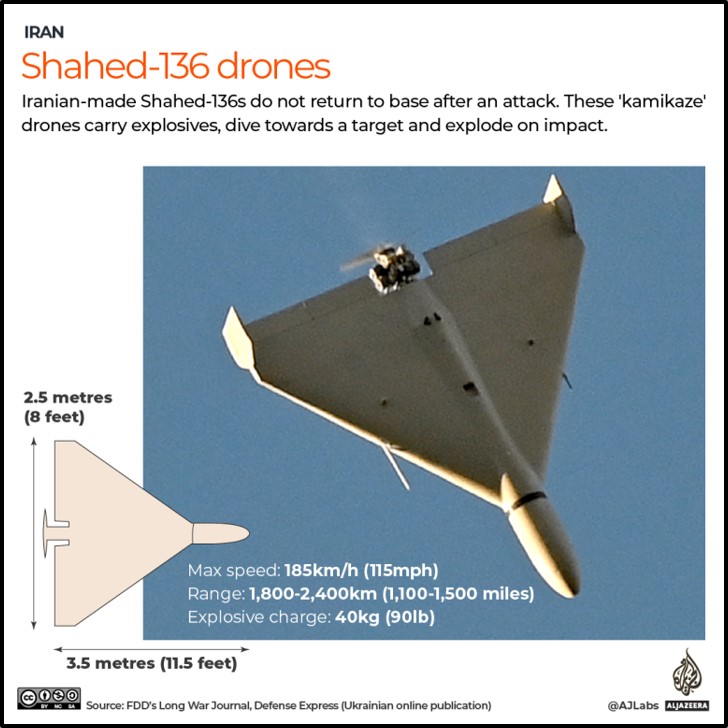 At the political and diplomatic level, Russia has helped Iran in different international contexts. For example, Russia has backed Iran’s position at the International Atomic Energy Agency, the U.N. nuclear watchdog. Moscow could also threaten to use its veto at the U.N. Security Council to prevent action against the Islamic Republic.
At the political and diplomatic level, Russia has helped Iran in different international contexts. For example, Russia has backed Iran’s position at the International Atomic Energy Agency, the U.N. nuclear watchdog. Moscow could also threaten to use its veto at the U.N. Security Council to prevent action against the Islamic Republic.
Military and security cooperation between the two countries has also deepened. Tehran has received Russian military support that it could not have acquired previously. In 2023, Iran expected to receive Sukhoi-35 fighter jets, attack helicopters, S-400 surface-to-air missile systems, and artillery.
Moscow’s broader support for Tehran was the primary incentive to transfer drones to Russia. Iran did not plan for the war between Russia and Ukraine, but it recognized an opportunity to maximize benefits from the conflict. The war has led to a decisive shift in relations between Tehran and Moscow.
But Tehran’s public messaging on the war and its drone exports have been contradictory. In the early months of the conflict, the government claimed that it had not sent drones to Russia. It later changed the narrative and admitted to exporting a limited number of unmanned aircraft before Russia invaded, but not for use in the conflict.
Despite the closer ties to Russia, Iran’s political elite hopes that no clear winner emerges from the bloody war in Ukraine. Tehran sees two great powers – Russia and Europe – as being weakened by the war. As a result, it expected Iran’s relative power on the global stage to increase.
Iran and Russia have had a contentious relationship since the 19th century. The Soviet Union briefly occupied Iran in the 20th century. How has the historical mistrust factored into the relationship?
Iranian leaders and the public have long been mistrustful of Russia. As an expansionist power, it seized a large amount of territory from northern Iran in the 19th century. Iran avoided aligning with the Soviet Union for fear of getting dragged into the Cold War or becoming dependent on Moscow. During the Islamic Republic’s first decade, the revolutionaries pursued a policy of nonalignment.
But the relationship between the Islamic Republic and the West gradually became more antagonistic. After the collapse of the Soviet Union, Iran perceived the West as hostile and feared the emergence of the United States as the unrivaled dominant force in the world. During the 1990s, the West became Iran’s archenemy. Tehran subsequently looked to deepen ties with Moscow and Beijing.
Iran has also deepened ties with China, which has had both a competitive and cooperative relationship with Russia. How has Iran tried to balance relations with both? What does it hope to gain?
Iranian officials, including President Raisi and his team, think that the 21st century belongs to Asia and rising powers there. Amid the shifting world order, they see China as the leader of an emerging Eastern bloc that includes Russia, Pakistan, and Iran.
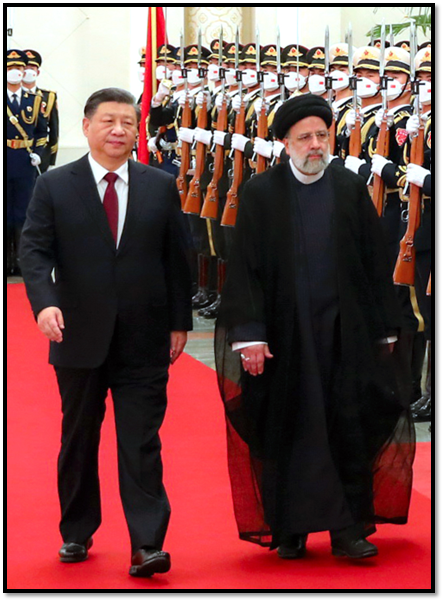
Virtually all political elites have pushed for strengthening ties with China. But they were divided over whether Iran should enter China’s orbit or simply have a good relationship with Beijing. Some thought that Iran should become a prominent member of China’s de facto alliance against the West and NATO. But many others sought to avoid becoming too dependent on China. They did not want Iran to turn into a satellite state like Belarus in relation to Russia.
The government would have a difficult time justifying a dramatic shift to China. True to the founding principle of “neither East nor West,” Article 152 of the constitution stipulates that Iran’s foreign policy is based on nonalignment and preserving its independence.
As of early 2023, Iran’s relationship with China had not yet reached a strategic level. It was primarily built on economic ties. Iran has largely viewed China as a factory, and China has viewed Iran as a market. But Iran was dissatisfied with the slow implementation of the 25-year strategic agreement between Beijing and Tehran to deepen economic and security ties signed in 2021. President Raisi expressed grander aspirations for the relationship during a visit to Beijing in February 2023 – the first state visit by an Iranian president in more than two decades.
Beijing has only begun to translate its economic power into political influence. China’s brokering of rapprochement between Iran and Saudi Arabia in March 2023 was an early sign of this shift.
Iran and China were on track to deepen ties in the coming years because Beijing needed Iran for two strategic reasons. First, China needed Iranian oil. For decades, the United States has ensured regional security for trade in energy resources through a significant military presence in the Persian Gulf. China has been a free rider. But in 2023, China sought to become more involved in the region as the United States pivoted to Asia. Second, Beijing looked to Iran as a provider of security in the region given its large military and network of proxy militias. And China, by translating economic power into political power, could dissuade Iran from disruptive actions. In the future, Iran and China are going to be very closely interdependent.
Picture Credits: Putin and Raisi via President.ir; Bushehr plant via IRNA; Khamenei via leader.ir; Raisi and Xi via president.ir
